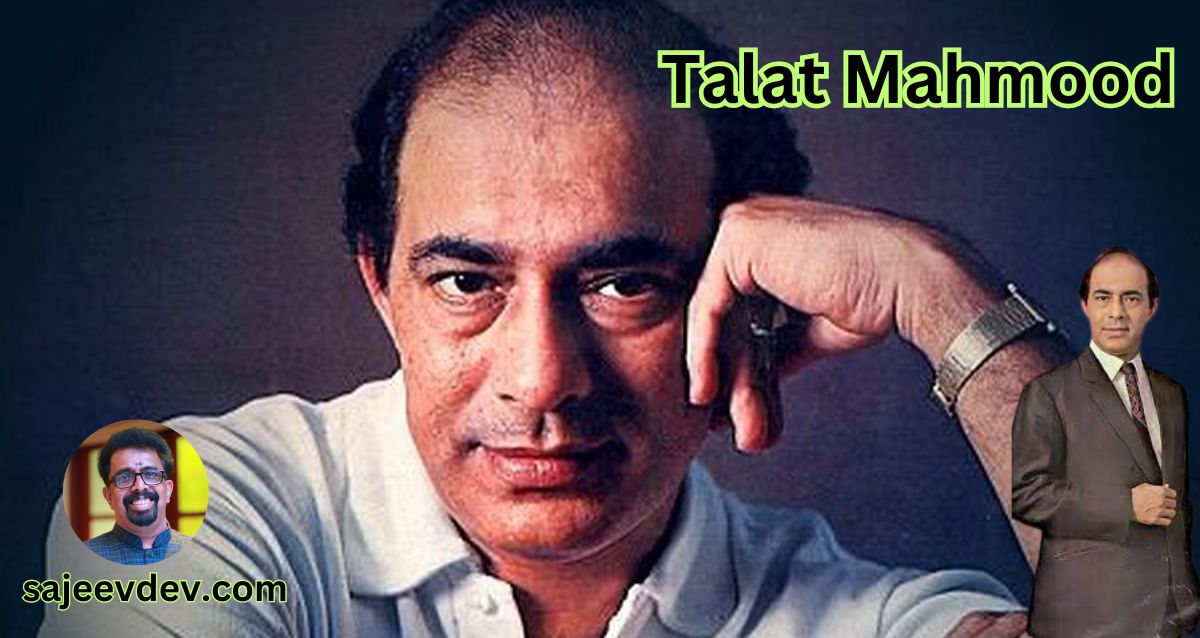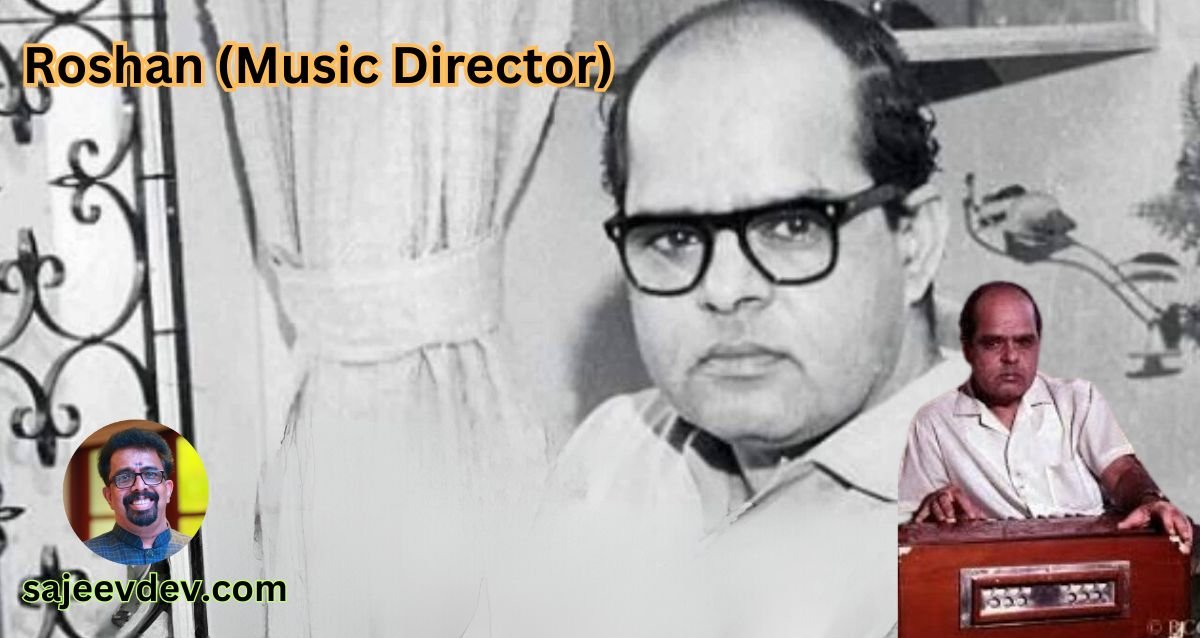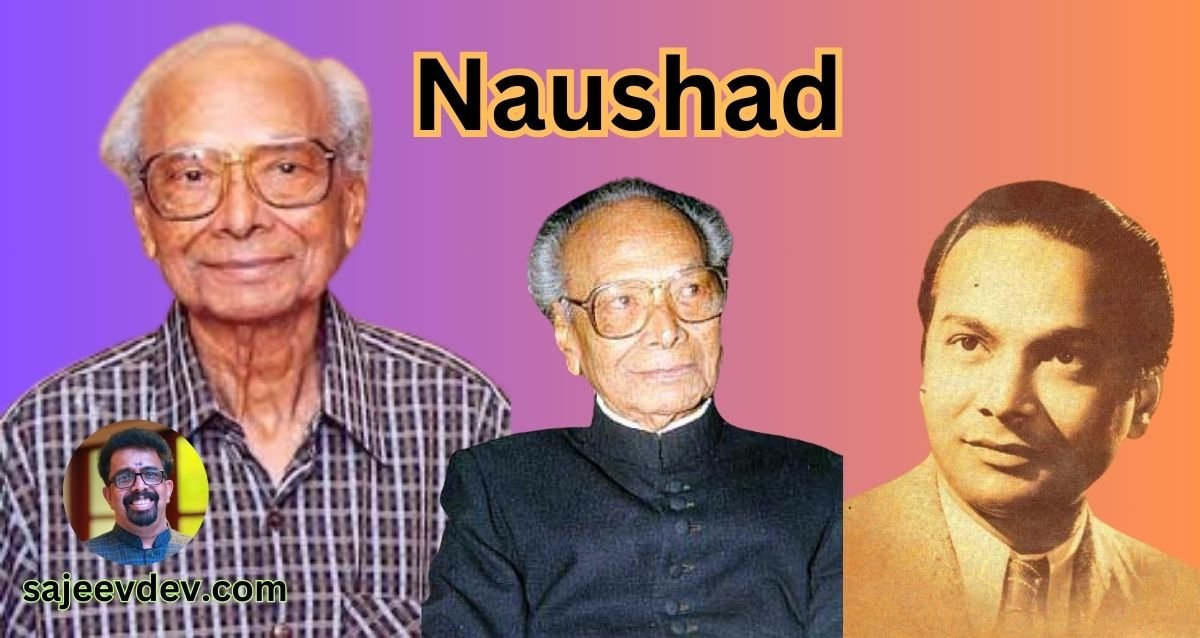Talat Mahmood
Born on February 24, 1924, in the culturally rich city of Lucknow, India, Talat Mahmood emerged as one of the most cherished voices in Indian music. With a career that spanned several decades, Mahmood garnered immense popularity for his unique ability to infuse emotion into every note he sang. Known as the “King of Ghazals,” he was widely recognized for his mastery in the genres of ghazals and romantic songs, making him a beloved figure in the country’s musical landscape.
Mahmood’s charming voice had an ethereal quality that resonated deeply with listeners, earning him a special place in the hearts of music enthusiasts. The delicate nuances he brought to romantic and melancholic numbers were unparalleled, establishing him as a pioneer who elevated the art form of ghazals. His cultural significance transcended regional boundaries, as he became an emblem of the lyrical and melodic beauty that Indian music has to offer.
Raised in a musically inclined family, Talat Mahmood was groomed from an early age to appreciate and cultivate his artistic talents. His vocal prowess and emotive singing style were key factors that led to his rise in the Indian music industry. Through diligent practice and an intrinsic understanding of musical intricacies, Mahmood managed to carve out a niche that many found hard to emulate.
Throughout his illustrious career, Talat Mahmood remained a constant source of inspiration for aspiring singers. His influence extended beyond just music; it was a testament to the profound impact that a single voice could have on an entire generation. By expertly blending classical Indian music with soulful melodies, Mahmood created a timeless legacy that continues to enchant music lovers across the globe.
Early Life and Musical Training
Talat Mahmood, recognized for his distinct voice that exuded an air of romance and melancholy, was born into a family deeply embedded in musical traditions. From an early age, he was immersed in an environment where music played a pivotal role. Growing up in Lucknow, a city renowned for its rich cultural heritage, Talat was exposed to various forms of music, setting the stage for his future endeavors in the industry.
The Mahmood household fostered an atmosphere that encouraged artistic pursuits. His father, Manzur Mahmood, was a noted vocalist of his time, which instilled in young Talat an appreciation for the classical forms of music. With a keen ear and innate talent, Talat began his rigorous training in classical music under the renowned Ustad Abdul Wahid Khan of Kirana Gharana. It was here that he learned the intricacies of classical ragas, imbibing a sense of discipline and dedication to his craft.
During his formative years, Talat Mahmood’s musical style was significantly shaped by his mentors and the rich cultural milieu of Lucknow. His early performances at local gatherings and radio programs catapulted him into the limelight, showcasing his ability to convey deep emotions through his voice. His unique style, characterized by a silky timbre and emotive delivery, quickly garnered the attention of music connoisseurs.
Talat’s substantial early exposure to classical music not only honed his technical skills but also provided a solid foundation upon which he built his career. Influenced by stalwarts like Mehdi Hassan and Ghulam Ali, he finely blended the traditional nuances of classical music with the emotive expression that became his hallmark. These early experiences and rigorous training sessions were instrumental in paving his path toward becoming a legendary figure in Indian music.
The 1950s marked the zenith of Talat Mahmood’s illustrious career, a period often revered as the golden age of Indian cinema and music. During this era, India witnessed a cultural renaissance with an infusion of traditional and modern motifs in the film industry. The country was embracing new avenues in storytelling, music, and technology, which allowed artists like Talat Mahmood to flourish and capture the hearts of millions. This era’s soundscape was dominated by classical and semi-classical themes blended seamlessly with the evolving film music, creating a rich tapestry of musical expression.
Talat Mahmood’s entry into the mainstream was nothing short of revolutionary. His velvety voice, coupled with a distinctively emotive delivery, distinguished him from his contemporaries. Unlike the robust and forceful voices that were popular at the time, Mahmood’s singing style was marked by a delicate, soulful touch that could effortlessly convey romance and melancholy. This unique blend of sensitivity and finesse resonated deeply with listeners, cementing his place in the annals of Indian music history.
Among his numerous hits, some songs stand out as timeless classics. ‘Jalte Hain Jiske Liye’ from the film “Sujata” exemplifies his ability to evoke deep emotion with seemingly effortless grace. Another iconic number, ‘Aye Dil Mujhe Aisi Jagah Le Chal’ from “Arzoo,” is a testament to his mastery of conveying longing and despair. ‘Sham-e-Gham Ki Kasam’ from “Foot Path” further highlights his talent for expressing nuanced shades of sorrow and melancholy through song. Each of these tracks is a testament to Talat Mahmood’s skill in weaving emotion into melody, making them evergreen pieces that continue to touch hearts even decades later.
Through these iconic songs and his distinctive singing style, Talat Mahmood not only rose to unparalleled fame but also left an indelible mark on the cultural and musical landscape of 1950s India. His contribution during this pivotal era remains a cherished chapter in the story of Indian music, ensuring his legacy as the voice of romance and melancholy endures.
The Silky Voice that Defined a Genre
Talat Mahmood’s voice is often described as silky, velvety, and distinctly evocative. These attributes were particularly well-suited for ghazals and romantic songs, genres that require a nuanced emotional depth. His unique vocal quality was characterized by a smooth, soft texture that could glide effortlessly over musical notes, creating a sense of tranquility and introspection. This aligned perfectly with the themes of love and longing that are central to romantic and melancholy music.
Mahmood’s vocal style was marked not only by its intrinsic qualities but also by his adept emotive expression. His ability to convey a myriad of emotions, from the pain of unrequited love to the bliss of romantic fulfillment, made his performances truly engaging. Every phrase he sang resonated with a sincerity that captivated listeners, effectively making him the ‘Voice of Romance and Melancholy’.
Contemporary musicians and critics have often lauded his ability to invoke deep emotional responses. Renowned music director Naushad once remarked, “Talat’s voice had an inherent emotion and sensitivity that few singers could match. It was as if his soul spoke through his singing.” Similarly, celebrated lyricist Shailendra commented, “Listening to Talat was like experiencing poetry in motion. His voice added a new dimension to my words.”
These testimonials underscore the profound impact Talat Mahmood had on his contemporaries and the genre itself. His vocal intricacies and heartfelt renditions ensured that his songs not only remained popular but also became timeless pieces in the annals of Indian music history. Thus, the silky, mellifluous voice of Talat Mahmood continues to be a benchmark, defining an era and setting the gold standard for future artists in the genre.
Memorable Tracks and Iconic Performances
Talat Mahmood, often revered as the voice of romance and melancholy, has left an indelible mark on Indian music with numerous memorable tracks that continue to resonate with audiences. One such poignant composition is ‘Jalte Hain Jiske Liye’ from the film Sujata (1959). Penned by Majrooh Sultanpuri and composed by the legendary S.D. Burman, this melodious ballad beautifully captures the pangs of unrequited love. The intricate lyrics, combined with Mahmood’s smooth, emotive voice, create an atmosphere of nostalgic yearning that touches the listener’s soul.
Another classic that highlights his versatility and emotional depth is ‘Aye Dil Mujhe Aisi Jagah Le Chal’ from the movie Arzoo (1950). Written by the skilled lyricist Majrooh Sultanpuri and set to a haunting melody by Anil Biswas, this song showcases the theme of desolation and longing. Talat Mahmood’s subtle nuances and restrained delivery imbue the track with a haunting quality, making it a staple for anyone seeking solace in music during their times of sorrow.
Moreover, ‘Sham-e-Gham Ki Kasam’ from the film Foot Path (1953) stands as a testament to Mahmood’s ability to convey deep melancholy through his voice. This song, crafted by lyricist Kaifi Azmi and composer Khayyam, is imbued with a profound sense of despair. The soulful rendering by Mahmood, coupled with the heartrending lyrics, strikes a chord with listeners, cementing its status as a timeless classic.
These iconic performances are just a few examples of how Talat Mahmood’s songs have endured through generations, owing to their universal themes and the masterful blending of lyrics and composition. Talat Mahmood’s ability to evoke strong emotions through his music has made his tracks an eternal part of India’s cultural heritage, earning him the timeless affection of audiences worldwide.
Collaborations with Music Directors and Lyricists
Talat Mahmood’s illustrious career is profoundly punctuated by his significant collaborations with celebrated music directors and lyricists in Indian cinema. These partnerships were not just professional engagements, but deeply creative unions that gave birth to some of the most timeless melodies in Bollywood. By working with pioneers like Naushad, Madan Mohan, and Shakeel Badayuni, Talat carved out a unique niche, making a lasting impact on the music industry.
One of the earliest and most notable collaborations in Talat Mahmood’s career was with Naushad, a maestro known for his soulful compositions. Their partnership began in the early 1950s and quickly proved prodigious. Tracks like “Jalte Hai Jiske Liye” from the movie Sujaata are often cited as exemplars of their combined artistry. Naushad’s intricate compositions provided Talat with the perfect canvas to showcase his emotive singing style, blending seamlessly with the lyrical depth introduced by poet-lyricist Shakeel Badayuni.
Another cornerstone of Talat’s repertoire was his work with Madan Mohan, often lauded as the “Ghazal King” of Bollywood. Their collaboration resulted in unforgettable songs such as “Raat Ne Kya Kya Khwaab Dikhaye” from the film Elo Je Dolona. Madan Mohan’s keen understanding of ghazals and Talat’s poignant voice proved to be an unparalleled combination, enriching the cultural tapestry of Indian music.
Shakeel Badayuni, a lyricist whose poetic prowess often elevated film songs to the level of literary art, also played an instrumental role in Talat Mahmood’s success. One notable example is the song “Sham-e-Gham Ki Kasam” from the movie Footpath. Collaborations with lyricists of Shakeel’s calibre allowed Talat to convey complex emotions, infusing each performance with a layer of depth and nuance that resonated deeply with audiences.
The significance of these collaborations in shaping Talat Mahmood’s career cannot be overstated. They not only encapsulated the essence of romance and melancholy but also contributed immensely to the richness and evolution of Indian music, solidifying Talat Mahmood’s legacy as a stalwart of melodious expression.
Later Years and Legacy
In the later years of Talat Mahmood’s illustrious career, he transitioned from the role of a renowned playback singer to exploring other musical ventures. Despite the advent of new musical trends, his vested interest in the depth and richness of music never waned. Talat saheb, as he was affably known, continued to perform live concerts and engaged in ghazal and private album recordings, where his mellifluous voice still enchanted audiences.
Talat Mahmood’s contributions to Indian music have been multifaceted. His captivating voice, known for its tranquility and emotional timbre, left an indelible mark on the golden era of Bollywood music. His rendition of romantic and melancholic songs gave depth to the characters on screen and his unique style influenced a swathe of playback singers in the years to follow. The legacy of his stylistic approach to singing has continued to inspire contemporary artists, which underscores the timelessness of his music.
Preserving Talat Mahmood’s vast body of work has been a concerted effort by music aficionados and cultural custodians. Various organizations and music societies have taken measures to digitize his music, ensuring that future generations can access and appreciate his masterpiece compositions. Restorations and reissues of his albums keep the legacy of his voice alive.
Throughout his life, Talat Mahmood received numerous accolades that celebrated his artistic excellence. Among the honors, he was conferred the prestigious Padma Bhushan by the Government of India in recognition of his immense contribution to Indian music. Posthumously, his legacy continues to be celebrated through various awards and musical tributes that honor his unforgettable talent and substantial impact on the music industry.
Talat Mahmood’s journey, from a playback singer to a revered icon in Indian classical and film music, symbolizes the perennial charm and emotive resonance of his voice, ensuring that his melodies will be cherished for generations to come.
The Lasting Echo of a Silken Voice
Talat Mahmood’s extraordinary journey through the realms of Indian music is nothing short of a melodious saga woven with threads of romance and melancholy. From his early beginnings to becoming a voice that defined an era, Mahmood’s evolution as an artist highlights the depth and versatility he brought to his craft. His ability to evoke powerful emotions through his nuanced renditions made him an icon whose songs continue to resonate with listeners even today.
The sublime quality of his voice, often described as ‘silken,’ lent a timeless charm to his music. Songs like “Jalte Hain Jiske Liye” and “Tasmai Subrahmanyaya Namah” stand as enduring testaments to his mastery. Each note, each lyric carried within it a delicate balance of heartfelt passion and melancholic reflection, touching the very core of human experience. His contributions not only elevated the standards of playback singing but also set a benchmark for emotive expression in Indian cinema.
Even decades after his passing, Talat Mahmood’s legacy continues to inspire musicians and enthrall audiences across generations. Aspiring singers look up to his unparalleled control over voice modulation and his innate ability to convey a spectrum of emotions. Music lovers revel in the sheer beauty of his songs, finding solace, joy, and nostalgia in their poetic depths. Indeed, Mahmood’s musical heritage serves as a bridge connecting the past with the present, reminding one and all of the profound impact a true artist can have on the cultural and emotional landscape.
As we reflect on Talat Mahmood’s illustrious career, we celebrate not just a singer but a storyteller who masterfully captured the essence of life through his melodies. His voice, enriched with romance and tinged with sorrow, remains a lasting echo, a silken thread in the grand tapestry of Indian music. His enduring influence is a testament to the timelessness of true artistry and the everlasting power of music to move the soul.



